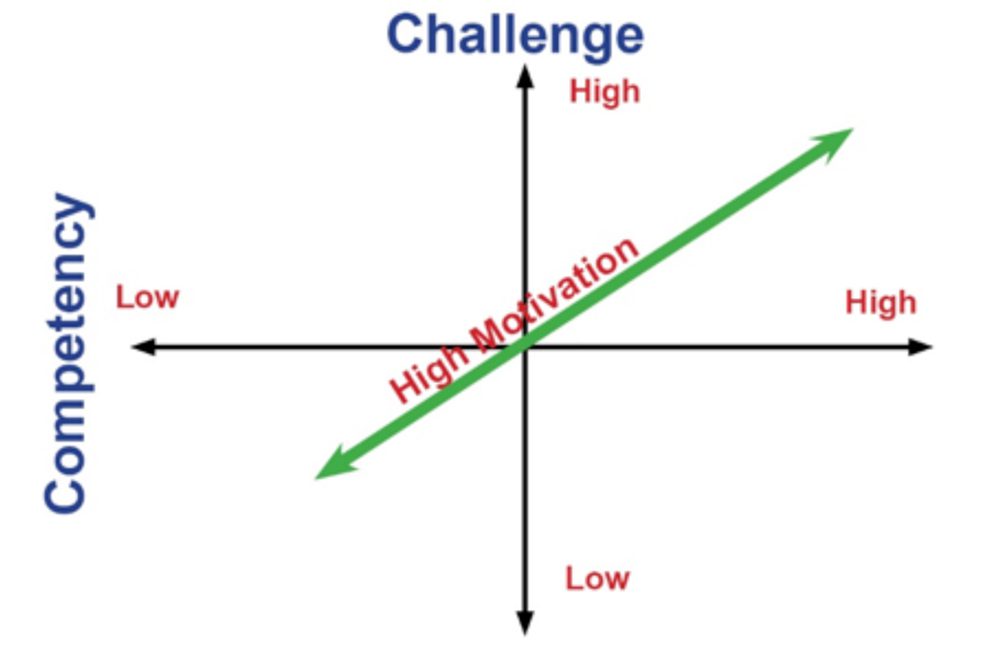An Olympic gold medalist I’ll call John was an amazing endurance athlete, but as a person, he was extremely shy and somewhat socially phobic. He always performed at his best in the most challenging and stressful of competitions but was painfully inept in interviews and social settings. John is a great example of how we all have different competency levels in different aspects of our lives.
For you to be motivated and to create the environment for others to be motivated and successful, can you match competency and skill for yourself, those you care about and—if you lead others—for them? When people are engaged in tasks that don’t challenge them, they’re likely to be bored and not highly productive. Conversely, when people take on challenges that are significantly more difficult than their competency (skill level), they might find themselves frustrated, even angry — and reach emotional burnout.
In high-performance and sport psychology, challenge, competency and motivation levels are all interrelated, as represented in the graph below. This is a graph I developed to combine the research of Clark Hull on drive (motivation) and Mihaly Csikszentmihalyi
on flow (flow state is the mind and body state when you are at your best).

The amount of motivation you have varies in part due to the relationship between competency and challenge levels. Motivation is usually high when both your skill and challenge levels are similar, unless both are low. When both competency and challenge are low, most people are not motivated.
What combination of competency and challenge level results in the highest motivation? The combination of high levels of competency and challenge. High performers typically seek out tough challenges and thrive when engaged in them.
Matching competency with challenge levels to find the right mix that creates high motivation is a bit like the process Goldilocks went through in the fairy tale “Goldilocks and the Three Bears”. To jog your fairy tale memory, here is the beginning of the story.
Once upon a time, there was a little girl named Goldilocks. She went for a walk in the forest. Pretty soon, she came upon a house. She knocked and, when no one answered, she walked right in. At the table in the kitchen, there were three bowls of porridge. Goldilocks was hungry. She tasted the porridge from the first bowl.
“This porridge is too hot!” she exclaimed. So, she tasted the porridge from the second bowl.
“This porridge is too cold,” she said. So, she tasted the last bowl of porridge.
“Ahhh, this porridge is just right,” she said happily, and she ate it all up.
Like Goldilocks finding the right temperature of porridge, you – and those you lead – will benefit by identifying the ideal level of challenge … when it’s not too high, or too low, when it’s just right! When you do, the reward high levels of motivation and enhanced joy, self-esteem and confidence.







